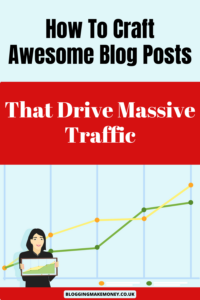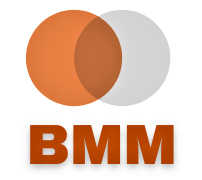Blog Posts That Drive Massive Traffic
Crafting blog posts that grab attention and keep readers engaged is a skill and a strategy. Whether you’re a beginner or have extensive experience, perfecting the skill of producing captivating, value-rich content is crucial for attracting visitors, enhancing interaction, and improving conversion rates. A thoughtfully designed blog post connects with your readers, fosters trust, addresses their challenges, and motivates them to delve deeper into what you provide. Adopting the right approach allows you to create blog posts that drive traffic consistently and effectively. Ready to unlock the secrets? Let’s dive in.

The Secret to Crafting Blog Posts That Drive Traffic
If your blog posts aren’t driving traffic, it’s not because people aren’t interested—your content isn’t hitting the mark. In today’s crowded digital landscape, mediocre content won’t cut it. The good news is, don’t worry—learning how to craft blog posts that drive traffic is a skill you can develop. Let’s explore strategies to help your content stand out and attract readers.
-
Start with Irresistible Headlines
Your headline is the first impression of your post, and it plays a vital role in crafting blog posts that drive traffic. In fact, 80% of readers only read the headline before deciding whether to engage with a piece of content. To create a compelling headline:
- Use Numbers and Power Words: Headlines like “10 Proven Ways to Skyrocket Your Blog Traffic” perform exceptionally well.
- Promise Value: Make it clear that your content solves a problem or fulfils a need.
- Stay Concise: Aim for headlines under 60 characters to ensure they’re fully displayed in search engine results.
A great example is BuzzFeed, which routinely uses curiosity-driven headlines to achieve viral results.
-
Understand Your Audience’s Needs
A deep understanding of your audience is the foundation of blog posts that drive traffic.
Successful blogs don’t just talk—they listen. Use tools like Google Analytics, surveys, or platforms like Quora to identify your audience’s pain points. Once you understand what they’re searching for, tailor your content to address those needs.
For example:
If your readers struggle with time management, write posts like “5 Time-Saving Hacks for Busy Professionals.”
If they want to learn about SEO, offer practical guides like this.

-
Write a Killer Introduction
Your introduction sets the tone and determines whether readers stay or leave. Start with a hook—a surprising fact, a bold question, or an engaging anecdote. For example:
“Did you know that 55% of visitors spend less than 15 seconds on a webpage? That’s all the time you have to grab their attention.”
Follow the hook with a clear statement of what the reader will gain from your post. This builds trust and encourages them to keep reading.
-
Optimise for SEO Without Sounding Robotic
SEO is essential for ensuring your blog posts that drive traffic get found by search engines.
But keyword stuffing is a thing of the past; instead, focus on the following:
- Strategic Keyword Placement: Include keywords naturally in your title, headings, and body content. For example, this article targets “blog posts that drive traffic.”
- Meta Descriptions: Write a compelling meta description (under 160 characters) encouraging clicks.
- Internal and External Links: Link to your site’s authoritative sources and related content to build credibility and boost search rankings.
-
Create Value-Packed, Actionable Content
Readers come to your site for solutions, so give them content they can use immediately. Use examples, step-by-step instructions, and actionable tips. For instance:
Don’t just say, “Use social media to promote your blog.”
Instead, explain how to create shareable graphics on Canva or schedule posts with tools like Buffer.
Incorporate relevant data and quotes to reinforce your points. According to a HubSpot study, blogs with data-backed content have 94% higher engagement.
-
Use Visuals to Enhance engagement
Visual content increases information retention and keeps readers on your page longer. Include:
- High-Quality Images: Use tools like Unsplash or Pexels to find stunning visuals.
- Infographics: Simplify complex information with visually appealing charts or diagrams.
- Videos and GIFs: Add multimedia elements to break up text and add a dynamic touch.
For example, a blog post about cooking might include step-by-step recipe images or videos demonstrating techniques.

-
Format for Readability
Nobody likes a wall of text. Structure your posts to make them scannable:
- Use short paragraphs (2–3 sentences).
- Incorporate bullet points and numbered lists.
- Add subheadings to break up sections and make it easy for readers to find what they want.
Research from the Nielsen Norman Group shows that readers scan online content, so make your posts easy to digest.
-
Include a Strong Call-to-Action (CTA)
End every blog post with a clear CTA. This could be:
- Encouraging readers to leave a comment.
- Asking them to share the post on social media.
- Directing them to sign up for your email newsletter.
For example:
“If you found these tips helpful, share this post with your network to help others grow their blogs too!”
-
Promote Your Blog Effectively
Even the best content won’t drive traffic if nobody sees it. Promote your posts through:
Social Media Platforms: Share on Instagram, LinkedIn, Twitter, and Facebook.
- Email Marketing: Use email lists to notify subscribers about new content.
- Guest Blogging: Write for other blogs in your niche and link to your site.
-
Continuously Update and Repurpose Content
Don’t let your old posts gather dust. Update outdated information, add new statistics, or repurpose evergreen content into videos, infographics, or eBooks. For instance, a blog post about travel tips can become an Instagram carousel or a YouTube video.
Related articles:
Blogging Traffic With Pinterest
Boost Your Business With Pinterest Marketing
How To Use Long Tail Keyword To Boost Your Traffic Online
Blogging How To Use A Blog To Benefit Your Online Business
Conclusion
Creating blog posts that drive massive traffic isn’t just about writing—it’s about understanding your audience, optimising for SEO, and delivering actionable value. Mastering these techniques will attract readers and keep them returning for more. So, what’s stopping you? Start implementing these strategies today and watch your blog traffic soar. The best time to start was yesterday. The second-best time is now.
Frequently Asked Questions And Answers
What Type of Blog Gets the Most Traffic?
Blogs that cater to a specific niche and solve problems for a clearly defined audience often attract the most traffic. Popular blog types include:
- How-To Blogs: Tutorials and guides on DIY projects, fitness routines, or cooking.
- Personal Finance Blogs: Budgeting tips, saving strategies, and investment advice.
- Tech Blogs: Reviews, how-tos, and news about gadgets, apps, or software.
- Health and Wellness Blogs: Fitness plans, mental health advice, and healthy recipes.
- Travel Blogs: Destination guides, travel tips, and itineraries.
Successful blogs typically focus on providing actionable value and staying consistent with quality content. For example, blogs like NerdWallet in personal finance or The Points Guy in travel attract millions of monthly visitors by solving specific problems for their readers.
How Many Blog Posts Do You Need to Get Traffic?
While there’s no magic number, consistency and quality matter more than quantity, a solid starting point is 30–50 well-optimised blog posts targeting different keywords within your niche.
Why this range? It provides enough content to demonstrate authority in your niche and allows search engines to index multiple pages from your site.
For new bloggers, aim to publish at least 1–3 high-quality posts per week to build momentum.
According to HubSpot, companies that publish 16+ blog posts per month get 3.5 times more traffic than those publishing fewer than four posts. However, prioritise quality—thin or poorly written content will harm your rankings.
How to Get 1000 Views Per Day on a Blog?
Getting 1,000 daily views requires a combination of content strategy, promotion, and SEO:
- Target Long-Tail Keywords: Focus on specific, less competitive phrases like “beginner yoga for weight loss” instead of “yoga.”
- Write Evergreen Content: Create posts that remain relevant over time, such as “10 Easy Budget Meals.”
Promote Aggressively:
- Share posts on social media.
- Engage in niche communities like Reddit or Facebook Groups.
- Use Pinterest, which drives significant traffic for bloggers in specific niches.
- Optimise for SEO: Ensure each post has a keyword-optimised title, meta description, and headings.
- Leverage Email Marketing: Build an email list and share new posts with subscribers.
Results won’t happen overnight, but a focused effort with these strategies can help you achieve this milestone.
Can You Make $1000 a Month Blogging?
Yes, earning $1,000 monthly from blogging is achievable with the right strategy. Here’s how:
- Monetise with Ads: Use ad networks like Google AdSense or Mediavine (for blogs with significant traffic).
- Affiliate Marketing: Promote products or services through affiliate links and earn commissions for every sale. Travel bloggers often recommend booking platforms like Airbnb or tools like Grammarly.
- Sell Digital Products: Create eBooks, courses, or printables tailored to your audience’s needs.
- Offer Sponsored Content: Collaborate with brands for paid reviews or promotions.
Many bloggers report reaching this income level within 6–12 months by combining these monetisation methods and scaling their efforts. However, success requires consistent, high-quality content and an engaged audience.

